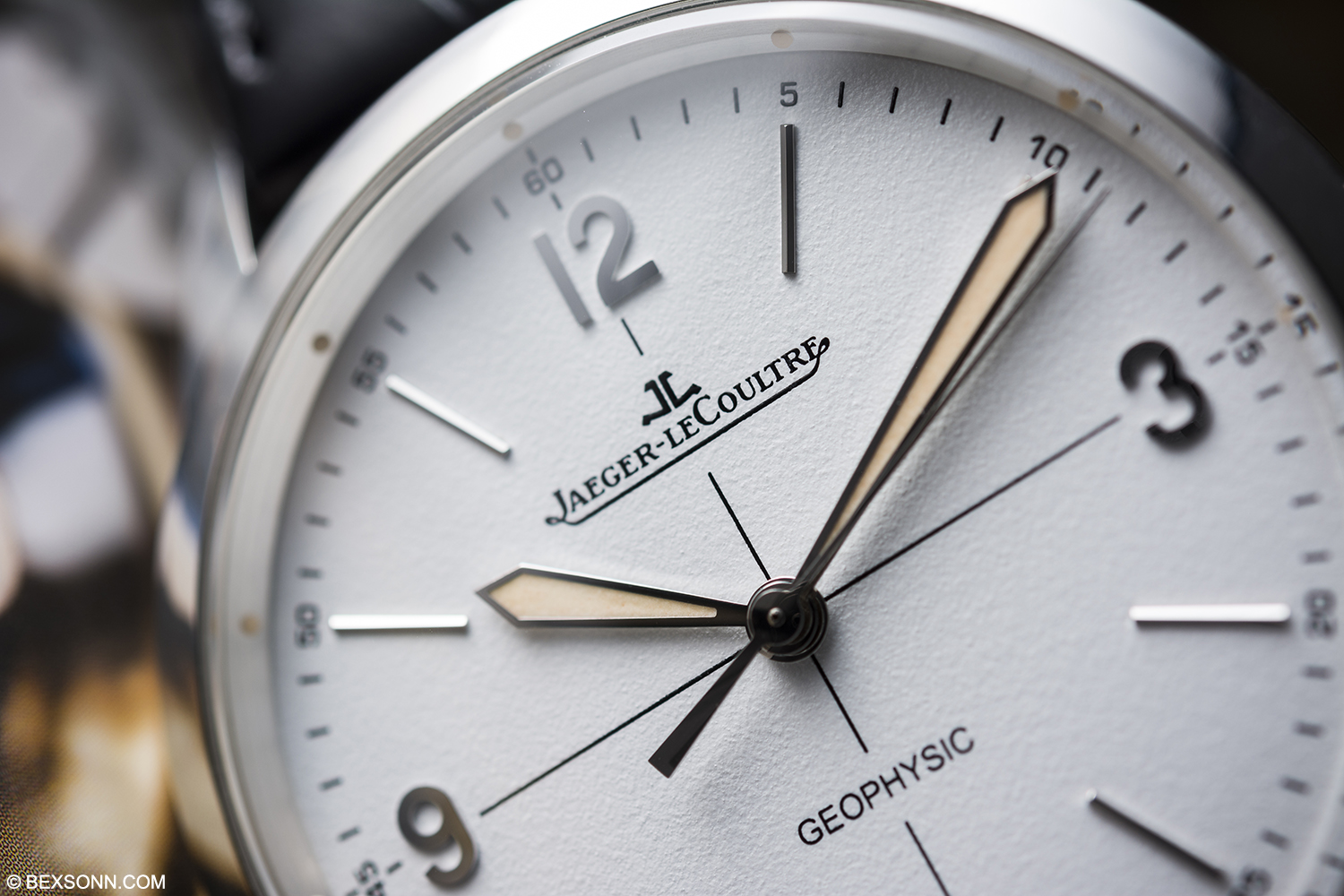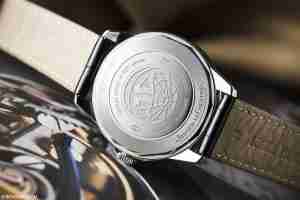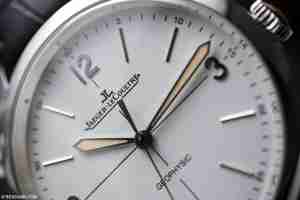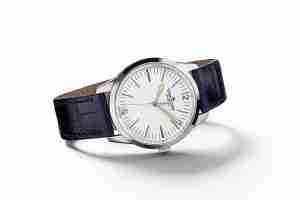 Jaeger-LeCoultre Geophysic 1958: A few weeks back we managed to get hands-on with the watch manufacturer’s tribute model that, arguably, was one of their best to date. Of course we are talking about Jaeger-LeCoultre’s Geophysic. Inspired by the classic and historic wristwatch made in 1958. Whilst watch brands are churning out tribute after tribute, admittedly I could probably count on one hand how many have got it right and without doubt this Geophysic 1958 is amongst those. We’ve seen timepieces from the likes of IWC (Ingenieur), Patek Philippe (Amagnetic), Omega (Railmaster) and Rolex (Milgauss) that featured a housing, which enable the movement to withstand magnetic fields up to a certain gauss level. Of course the heavyweights mentioned weren’t just made for the sake of it but the unfamiliar timepiece that boasts greater historic importance than those is Jaeger-LeCoultre’s Geophysic. Made for a more discrete and scientific reason, in numbers just over 1000 in stainless steel and 30 in gold, it is a legend within its own right.
Jaeger-LeCoultre Geophysic 1958: A few weeks back we managed to get hands-on with the watch manufacturer’s tribute model that, arguably, was one of their best to date. Of course we are talking about Jaeger-LeCoultre’s Geophysic. Inspired by the classic and historic wristwatch made in 1958. Whilst watch brands are churning out tribute after tribute, admittedly I could probably count on one hand how many have got it right and without doubt this Geophysic 1958 is amongst those. We’ve seen timepieces from the likes of IWC (Ingenieur), Patek Philippe (Amagnetic), Omega (Railmaster) and Rolex (Milgauss) that featured a housing, which enable the movement to withstand magnetic fields up to a certain gauss level. Of course the heavyweights mentioned weren’t just made for the sake of it but the unfamiliar timepiece that boasts greater historic importance than those is Jaeger-LeCoultre’s Geophysic. Made for a more discrete and scientific reason, in numbers just over 1000 in stainless steel and 30 in gold, it is a legend within its own right.
 BRIEF HISTORY OF THE GEOPHYSIC
BRIEF HISTORY OF THE GEOPHYSIC
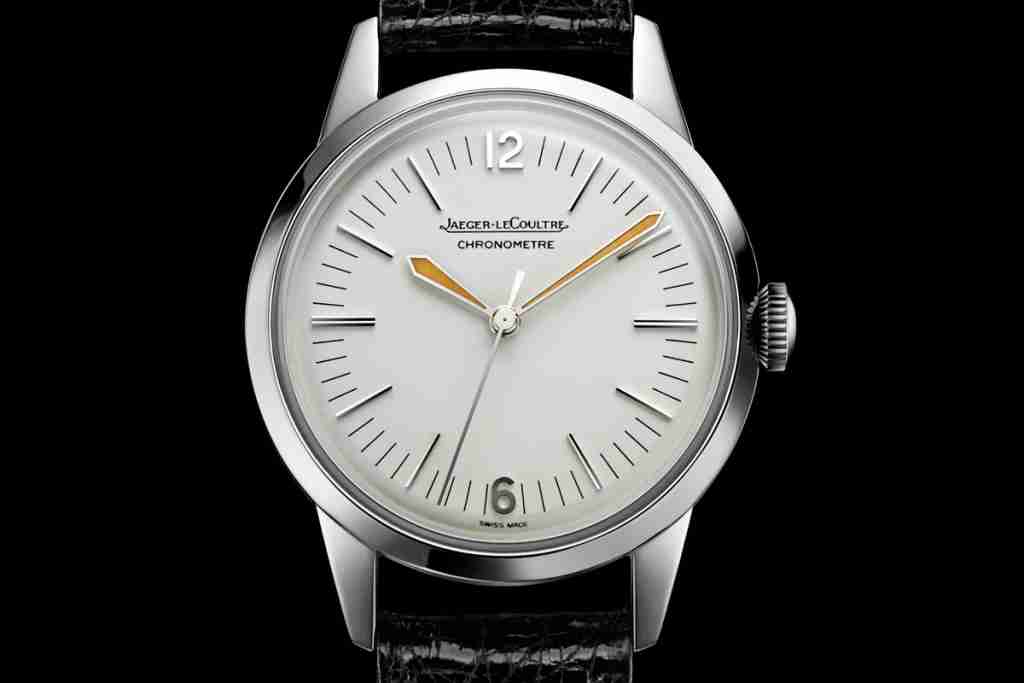 One of the most important models in the Jaeger-LeCoultre heritage, the Geophysic chronometer has an interesting history. It was created in 1958 during the manufactures 125th anniversary but also during the very first International Geophysical Year. In 1958, with the world still divided into two political blocks and the Cold War still raging, various international bodies resolved to unite their strengths in order to discover the last unexplored regions of our planet.
One of the most important models in the Jaeger-LeCoultre heritage, the Geophysic chronometer has an interesting history. It was created in 1958 during the manufactures 125th anniversary but also during the very first International Geophysical Year. In 1958, with the world still divided into two political blocks and the Cold War still raging, various international bodies resolved to unite their strengths in order to discover the last unexplored regions of our planet.
The first research programme was jointly conducted by 67 nations from both East and West. In an era when the space race was just starting, rockets were launched in order to study the composition of the upper layers of the atmosphere. But it was also during the International Geophysical Year that the study of seabeds served to confirm the theory of plate tectonics. The little-known poles were the focus of universal attention and permanent observation stations were set up in the Antarctic, while an American submarine crossed from the Atlantic Ocean to the Pacific Ocean by travelling under the ice cap covering the North Pole.
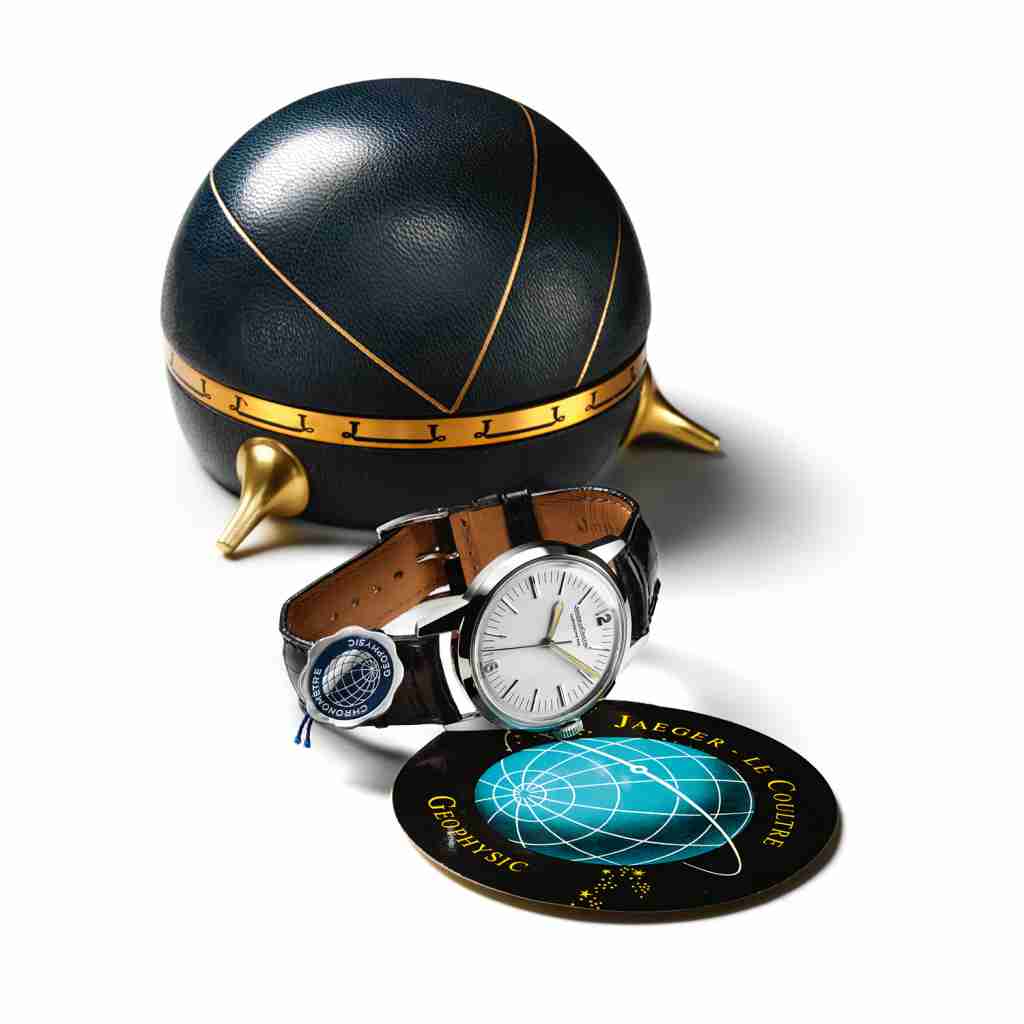 On August 1st 1958, the first ever atomic submersible vessel, named USS Nautilus in tribute to the fantastic submarine imagined by Jules Verne, set off in absolute secrecy with the unprecedented aim of making a submerged transit from one ocean to the other via the most direct route – meaning beneath the ice sheet covering the Arctic. After three days in submersion, the Nautilus made the transit without anyone apart from the crew being aware of this achievement.
On August 1st 1958, the first ever atomic submersible vessel, named USS Nautilus in tribute to the fantastic submarine imagined by Jules Verne, set off in absolute secrecy with the unprecedented aim of making a submerged transit from one ocean to the other via the most direct route – meaning beneath the ice sheet covering the Arctic. After three days in submersion, the Nautilus made the transit without anyone apart from the crew being aware of this achievement.
Jaeger-LeCoultre was of course particularly proud of this feat and the part they played in this event in history. The original Geophysic featured a movement that had originated from military watches (Mark XI) and incorporated a hacking-seconds mechanism. The calibre 478BWSbr movement also utilised a glucydur balance for stability through changes in temperature and was fitted with a shock absorber; a “swan neck” index for micrometric adjustment; and the essential soft-iron inner case that protected the mechanism from the effects of magnetism up to 600 gauss. These attributes made it possible for the timepiece to be utilised during the expedition beneath the North Pole.
 GEOPHYSIC 1958
GEOPHYSIC 1958
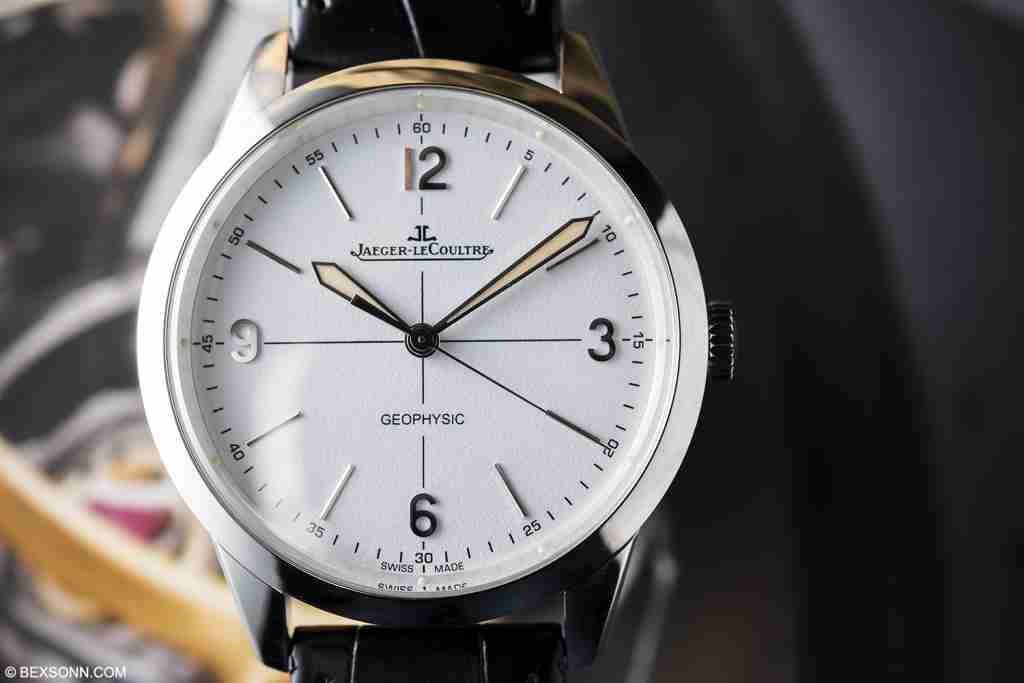 Last year Jaeger paid tribute to this legendary timepiece and introduced three new models, one in stainless steel another one in pink-gold, and an exclusive boutique only model in platinum. Inspired by the original, all three draw on the design of the 1958 timepiece and further enhance this classic look, with a more contemporary appearance.
Last year Jaeger paid tribute to this legendary timepiece and introduced three new models, one in stainless steel another one in pink-gold, and an exclusive boutique only model in platinum. Inspired by the original, all three draw on the design of the 1958 timepiece and further enhance this classic look, with a more contemporary appearance.
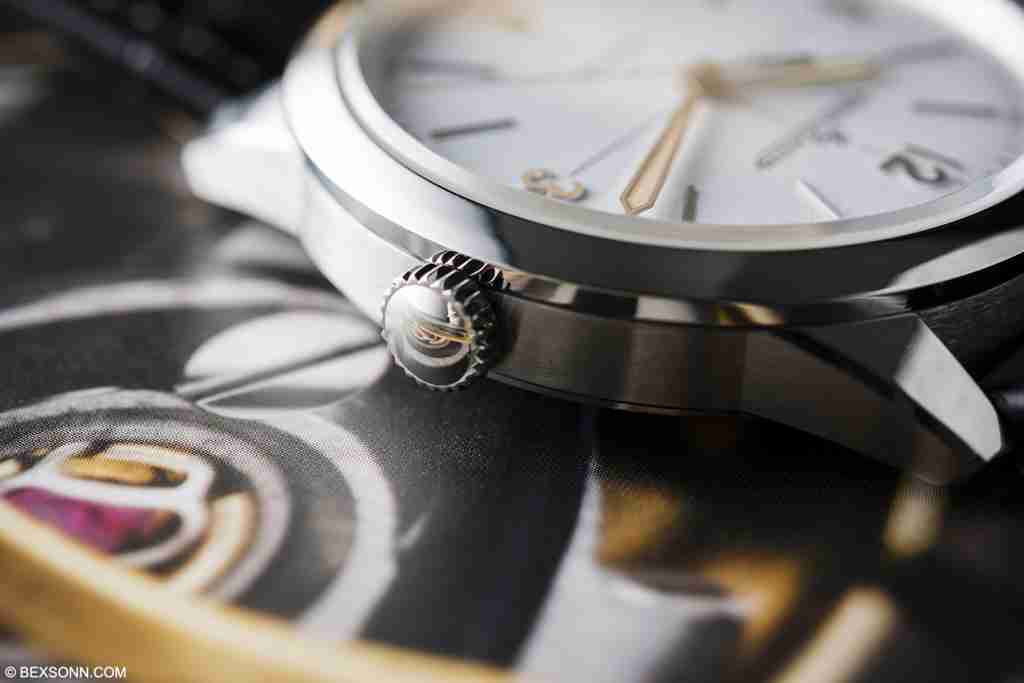 The Geophysic 1958 features a slightly larger case of 38.5mm than its historic predecessor, the ref. E168 that featured a 35mm case, not only bringing it into realms of perfect in the modern era of watchmaking but it also gives it a more versatile look, after all it was made to be a tool watch. The minimalistic case design is a thing of beauty and features polished lugs and bezel, with a brushed centre case. Turning the timepiece over you’ll see the beautifully embellished screw-down case back that plays with the J and L initials of Jaeger-LeCoultre superimposed on a globe crisscrossed by latitude and longitude lines. In true style of the original, the case back doesn’t afford any glimpse of the in-house JLC movement, though denotes the number of limited pieces and the inscription Geophysic, and Jaeger-LeCoultre. The Geophysic’s case is water-resistant to 100 metres.
The Geophysic 1958 features a slightly larger case of 38.5mm than its historic predecessor, the ref. E168 that featured a 35mm case, not only bringing it into realms of perfect in the modern era of watchmaking but it also gives it a more versatile look, after all it was made to be a tool watch. The minimalistic case design is a thing of beauty and features polished lugs and bezel, with a brushed centre case. Turning the timepiece over you’ll see the beautifully embellished screw-down case back that plays with the J and L initials of Jaeger-LeCoultre superimposed on a globe crisscrossed by latitude and longitude lines. In true style of the original, the case back doesn’t afford any glimpse of the in-house JLC movement, though denotes the number of limited pieces and the inscription Geophysic, and Jaeger-LeCoultre. The Geophysic’s case is water-resistant to 100 metres.
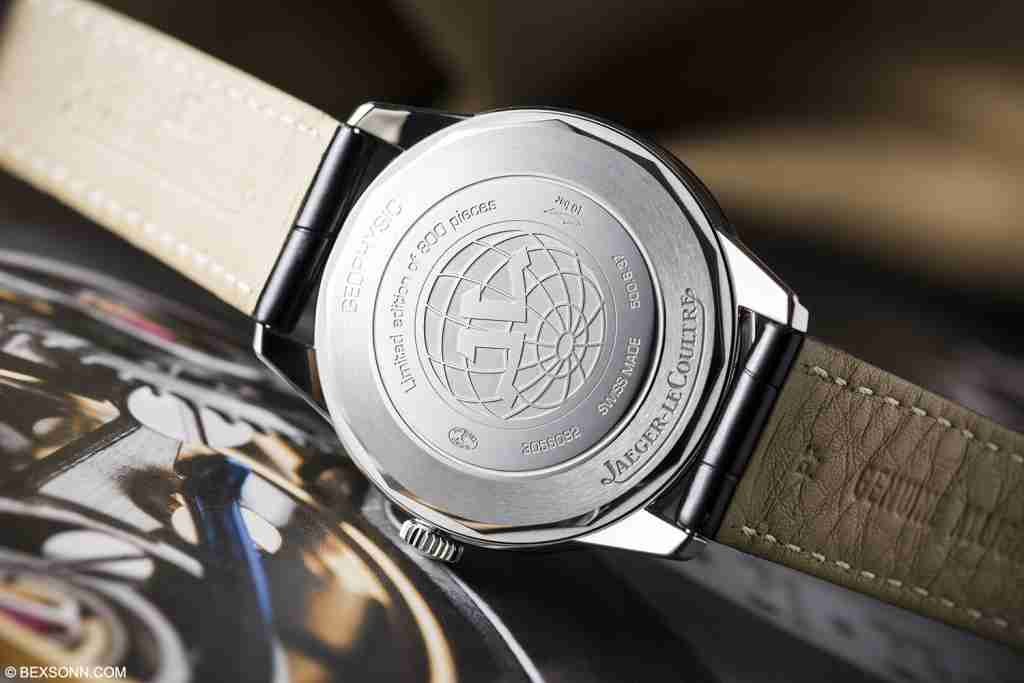 Ticking away inside is the in-house manufacture calibre 898/1 that is considered one of the most precise and reliable automatic movements on the market today. Beating at a frequency of 28,800 vph the high precision calibre, like its forefather it also features a hacking second for accurate setting of the time. The movement also makes use of Kif Parechoc for shock-resistance; Spyr gears for smooth transmission of torque in the gear train; automatic winding with ceramic ball bearings that require no lubrication, and of course the movement wouldn’t be complete without the all-important soft-iron inner case that protects the movement from the effects of magnetism. Like all other JLC pieces the Geophysic has been put through the manufactures stringent 1000 hours of controlled testing, which encompasses the movement in the case with a deviation of -1 / +4 seconds per day.
Ticking away inside is the in-house manufacture calibre 898/1 that is considered one of the most precise and reliable automatic movements on the market today. Beating at a frequency of 28,800 vph the high precision calibre, like its forefather it also features a hacking second for accurate setting of the time. The movement also makes use of Kif Parechoc for shock-resistance; Spyr gears for smooth transmission of torque in the gear train; automatic winding with ceramic ball bearings that require no lubrication, and of course the movement wouldn’t be complete without the all-important soft-iron inner case that protects the movement from the effects of magnetism. Like all other JLC pieces the Geophysic has been put through the manufactures stringent 1000 hours of controlled testing, which encompasses the movement in the case with a deviation of -1 / +4 seconds per day.
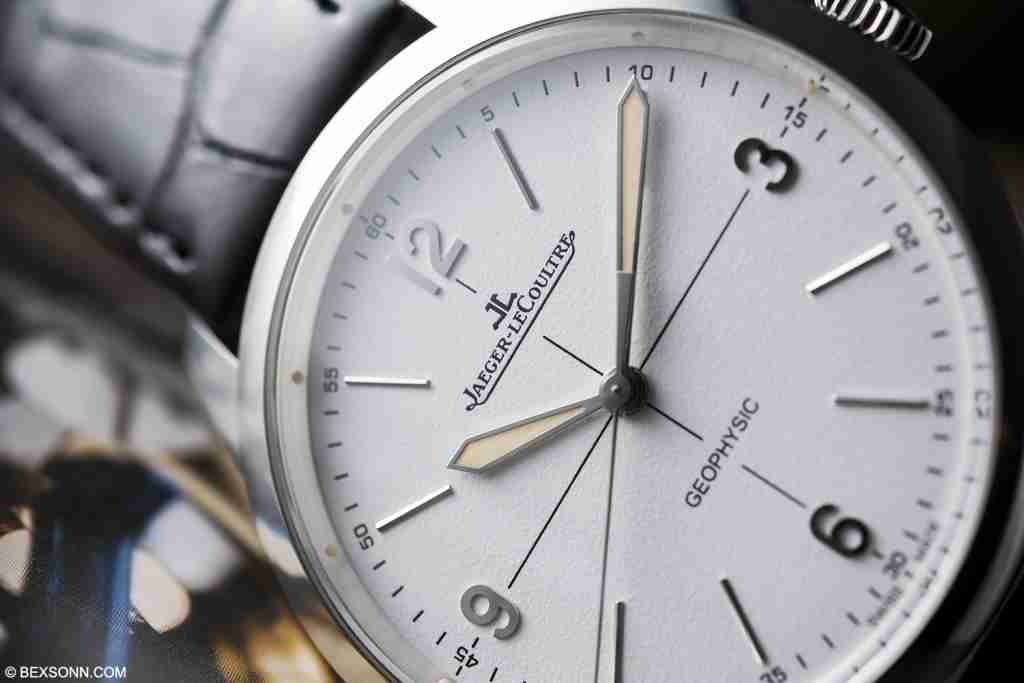 The dial, which is one of the most intriguing and admittedly my favourite part of the watch, features a layout that is akin to the original ref. E168 but probably not the one you’re more accustomed to seeing. Three central hands indicating the hours, minutes and seconds glide steadily over the grained white dial bearing a cross hair and the inscription “Geophysic” along with the brands signature at 12 o’clock. At 3, 6, 9 and 12 o’clock are Arabic numerals, which interrupt the circle of applied hour-markers, thereby reproducing the layout and design of the historic model. The platinum version will be the only model that features the more widely known dial layout with hand-applied markers, numerals at 6 and 12.
The dial, which is one of the most intriguing and admittedly my favourite part of the watch, features a layout that is akin to the original ref. E168 but probably not the one you’re more accustomed to seeing. Three central hands indicating the hours, minutes and seconds glide steadily over the grained white dial bearing a cross hair and the inscription “Geophysic” along with the brands signature at 12 o’clock. At 3, 6, 9 and 12 o’clock are Arabic numerals, which interrupt the circle of applied hour-markers, thereby reproducing the layout and design of the historic model. The platinum version will be the only model that features the more widely known dial layout with hand-applied markers, numerals at 6 and 12.
 One of my favourite aspects of the dial is the luminous hour dot markers. The originals dot markers were placed between the inner bezel and plexi-glass, of course this caused issues when the glass was changed. What Jaeger have done is place these dots around the inner bezel ring. Meanwhile, the dagger-shaped hands are rhodium-plated on the steel version and feature what is referred to as “faux patina” but for me, I think it works. It adds warmth to the dial, which would otherwise be absent, had JLC not done this.
One of my favourite aspects of the dial is the luminous hour dot markers. The originals dot markers were placed between the inner bezel and plexi-glass, of course this caused issues when the glass was changed. What Jaeger have done is place these dots around the inner bezel ring. Meanwhile, the dagger-shaped hands are rhodium-plated on the steel version and feature what is referred to as “faux patina” but for me, I think it works. It adds warmth to the dial, which would otherwise be absent, had JLC not done this.
 Each version of the Geophysic comes fitted with an alligator leather strap and is secured to the wrist by a JL pin buckle in matching metal of the case; black for the steel version, chocolate-brown for the pink-gold version and navy blue for the platinum version. The Geophysic 1958 has only been made in limited numbers, with only 800-pieces in stainless steel, 300-pieces in 18-carat pink-gold and an even further limited number of 58-pieces in platinum exclusive to JLC boutiques.
Each version of the Geophysic comes fitted with an alligator leather strap and is secured to the wrist by a JL pin buckle in matching metal of the case; black for the steel version, chocolate-brown for the pink-gold version and navy blue for the platinum version. The Geophysic 1958 has only been made in limited numbers, with only 800-pieces in stainless steel, 300-pieces in 18-carat pink-gold and an even further limited number of 58-pieces in platinum exclusive to JLC boutiques.
 LAST FEW WORDS
LAST FEW WORDS
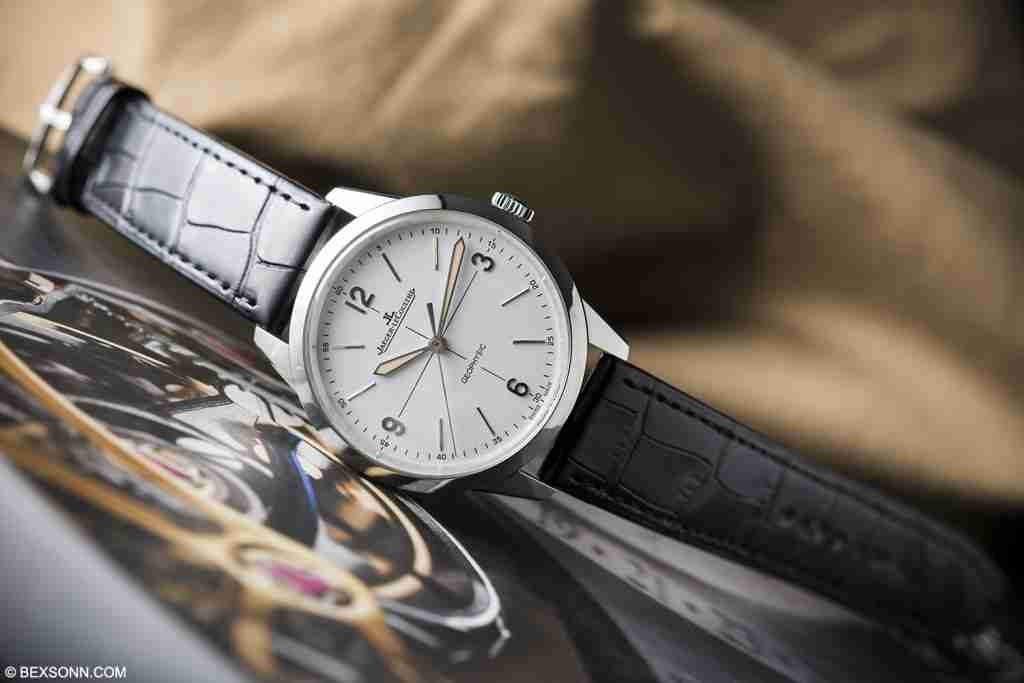 When the Geophysic 1958 was first announced last year it was in some part greeted with scepticism. Of course this isn’t unusual when you consider the amount of reissues and commemorative editions that are released by some brands. But JLC got this Geophysic so right in so many ways and this is something that is seldom achieved. In my humble opinion the JLC Geophysic 1958 gives you a lot of bang for your buck, we are talking about an in-house manufacture movement with lesser deviation tolerance than COSC standards, anti-magnetic, water-resistant to 100m and looks this good. The Geophysic 1958 is the quintessence of a gentleman’s everyday tool watch, which can be dressed up or down and it just works.
When the Geophysic 1958 was first announced last year it was in some part greeted with scepticism. Of course this isn’t unusual when you consider the amount of reissues and commemorative editions that are released by some brands. But JLC got this Geophysic so right in so many ways and this is something that is seldom achieved. In my humble opinion the JLC Geophysic 1958 gives you a lot of bang for your buck, we are talking about an in-house manufacture movement with lesser deviation tolerance than COSC standards, anti-magnetic, water-resistant to 100m and looks this good. The Geophysic 1958 is the quintessence of a gentleman’s everyday tool watch, which can be dressed up or down and it just works.
The Geophysic 1958 is now available, so for further details visit the official Jaeger-LeCoultre website.
